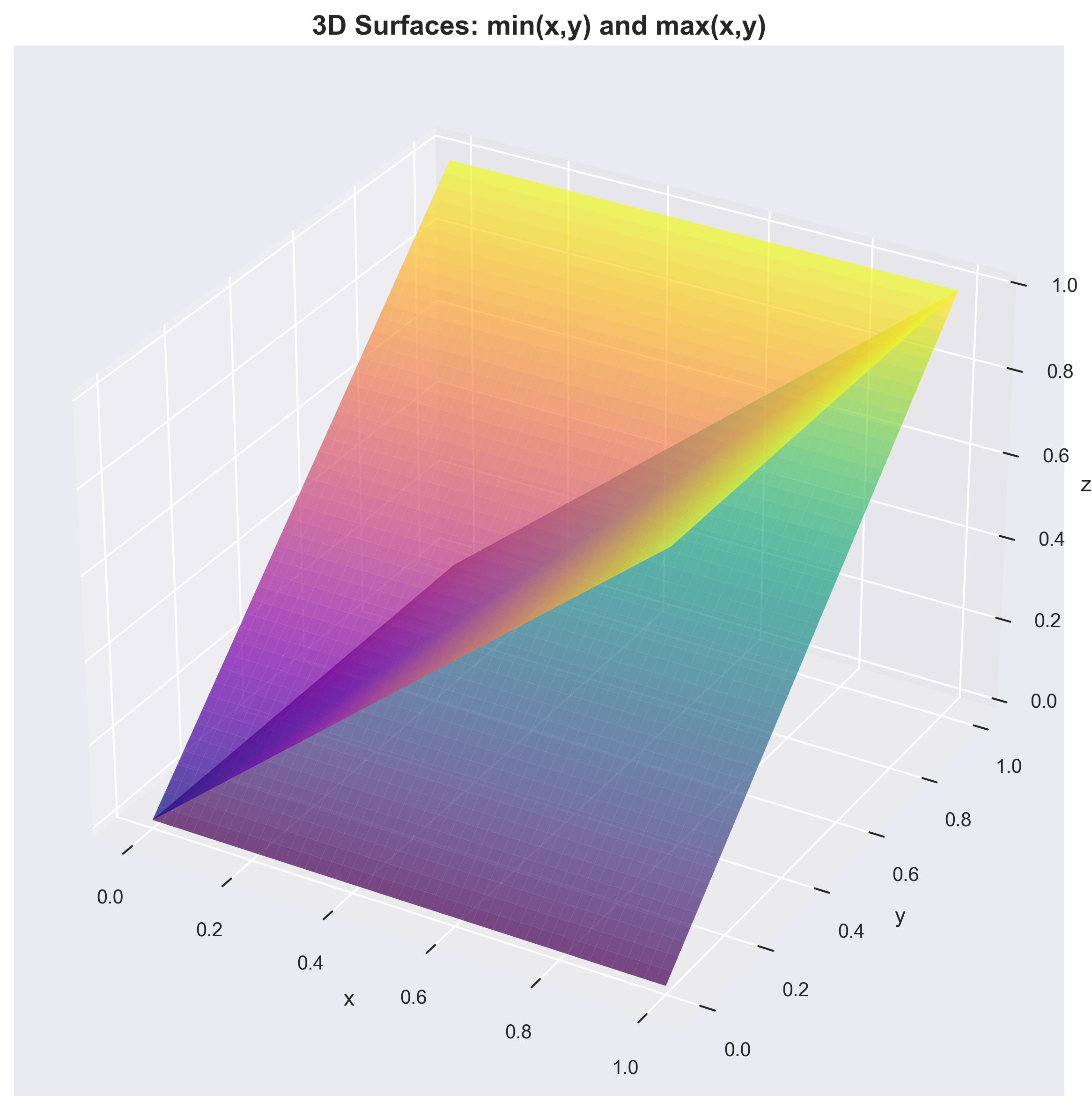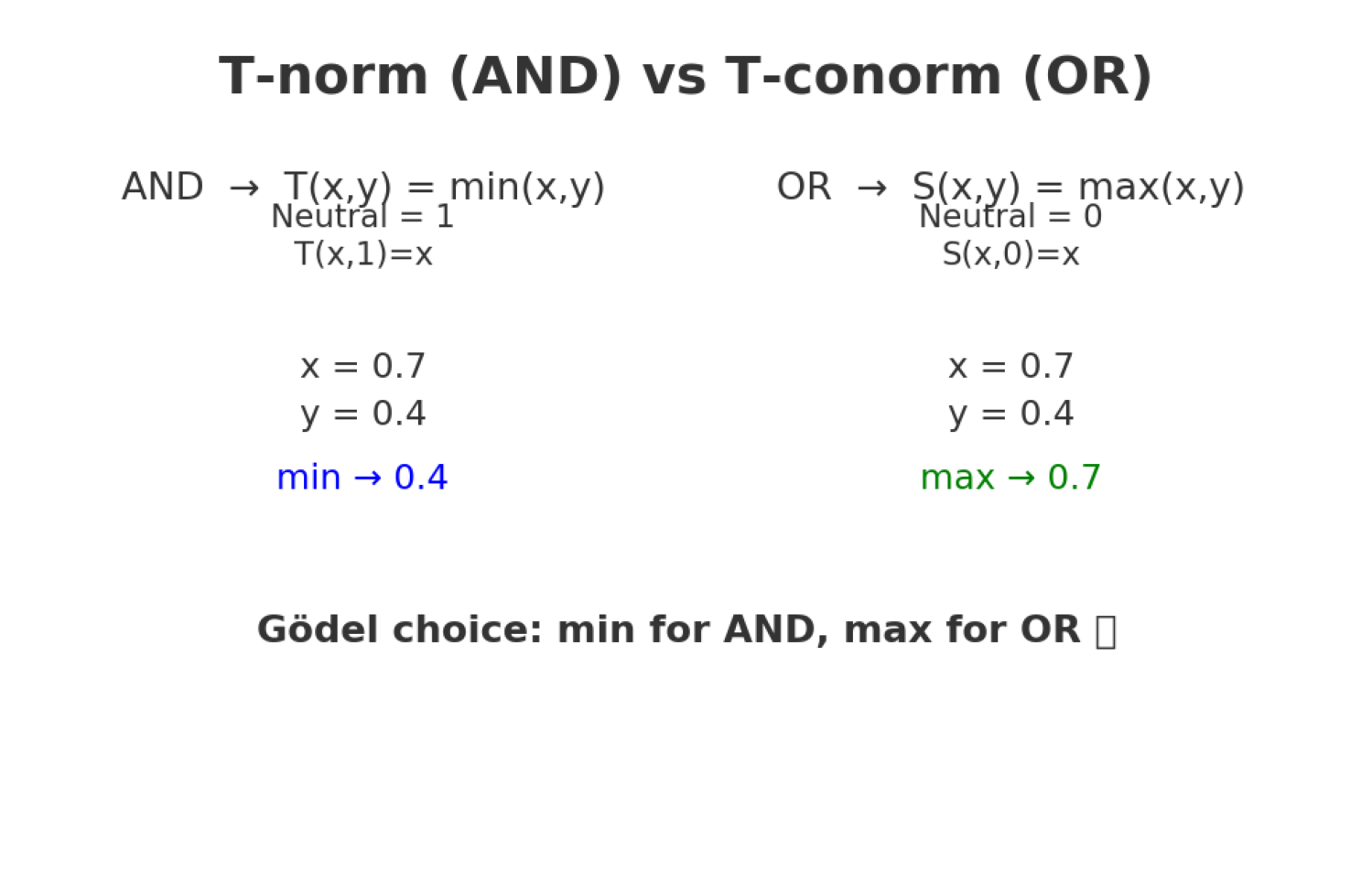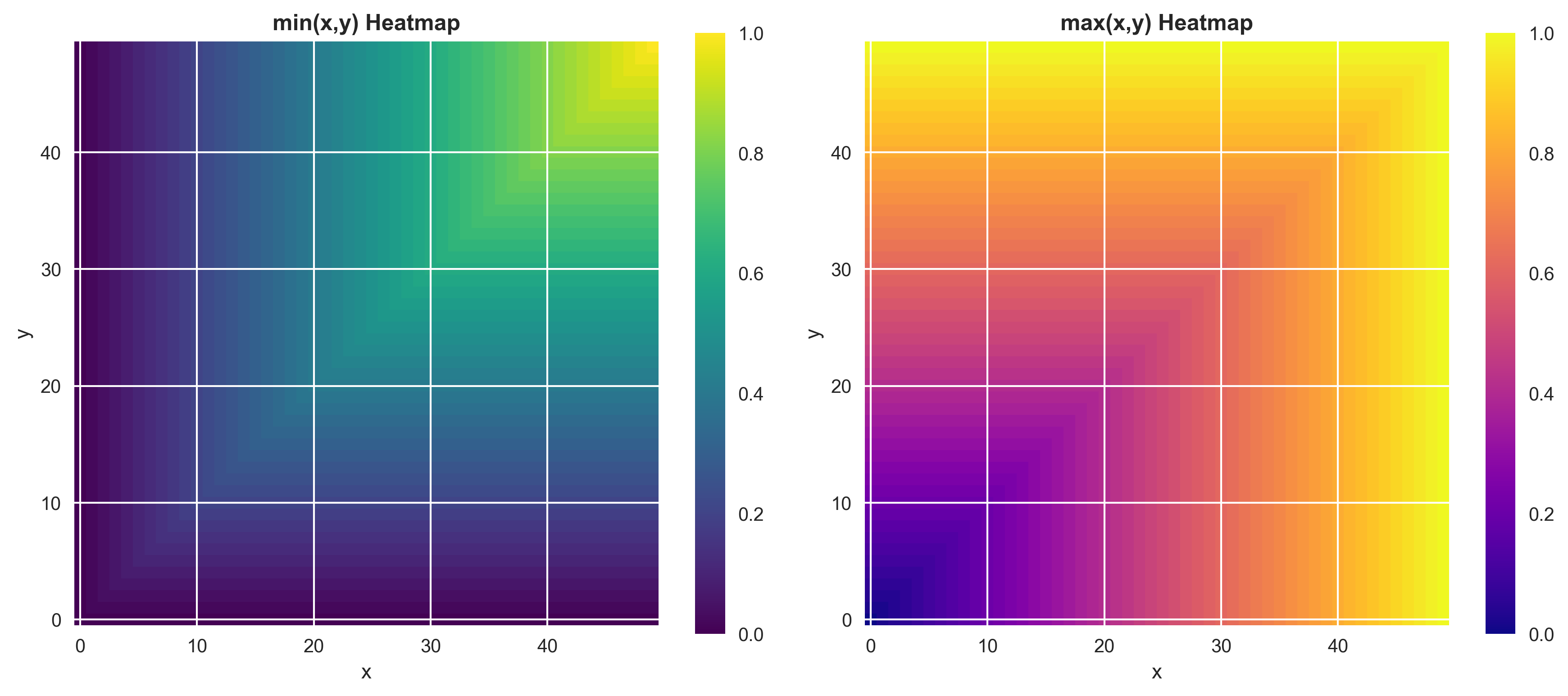Day 1 — Boolean Logic to Numbers: AND as min, OR as max 🧮
🚀 Welcome to My 30-Day Data Science Challenge!
Hey there! I'm Sughosh P Dixit, a Data Scientist at Oracle Finance, and I'm excited to share something special with you. After completing my first year as a Data Scientist, I've decided to give back to the community by publishing 30 articles over 30 days, each covering a different Data Science concept that I use in my day-to-day work.
Why This Challenge? 💡
During my journey at Oracle, I've learned that the most valuable insights often come from the practical application of mathematical concepts in real-world scenarios. These aren't just theoretical exercises—they're the building blocks of the models, algorithms, and systems that power modern data-driven decision making.
What to Expect 📚
Each day, I'll dive deep into a specific concept, covering:
- Mathematical foundations with intuitive explanations
- Real-world applications from my experience at Oracle
- Practical examples you can implement immediately
- Visual representations to make complex ideas accessible
The Journey Ahead 🗺️
From Boolean logic and fuzzy systems (today's topic) to advanced machine learning techniques, time series analysis, and everything in between—we'll explore the full spectrum of Data Science concepts that form the backbone of modern analytics.
Join the Community! 🤝
- Follow along: Bookmark this series and check back daily
- Engage: Share your thoughts, questions, and implementations in the comments
- Connect: Follow me on LinkedIn for updates and behind-the-scenes content
- Share: Help others discover this series by sharing with your network
So grab your coffee ☕, get comfortable, and let's embark on this 30-day journey together. Whether you're a seasoned data scientist or just starting out, there's something here for everyone!
Let's make Data Science accessible, one concept at a time! 🚀
TL;DR: We can extend Boolean rules to graded (0–1) "degrees of truth" by replacing AND with the minimum operator and OR with the maximum operator. This choice—known as the Gödel t‑norm/t‑conorm—preserves the algebraic properties we rely on in logic (commutativity, associativity, monotonicity, identity elements), remains conservative and interpretable, and lets us evaluate complex rule expressions on numeric features.

Why go beyond 0 or 1? 🤔
Real‑world rules often have shades of satisfaction. For example, two numeric conditions might be "mostly satisfied" rather than strictly true or false. Moving from Boolean 1 to real‑valued [0,1] degrees of truth allows:
- ✅ Graded rule satisfaction ("0.7 satisfied").
- ✅ Smooth aggregation across multiple conditions.
- ✅ Monotone behavior: tightening any input shouldn't increase the rule score.
The central question: how should we generalize AND and OR for values in [0,1]?
T‑norms and T‑conorms at a glance 📐
A t‑norm T generalizes logical AND to [0,1], and a t‑conorm (or s‑norm) S generalizes logical OR. Desiderata for AND‑like T and OR‑like S include:
For a t‑norm T:
- 🔄 Commutativity:
T(x,y) = T(y,x) - 🔗 Associativity:
T(x,T(y,z)) = T(T(x,y),z) - 📈 Monotonicity: if
x ≤ x′andy ≤ y′thenT(x,y) ≤ T(x′,y′) - 🎯 Neutral element 1:
T(x,1) = x
For a t‑conorm S:
- 🔄 Commutativity, associativity, monotonicity
- 🎯 Neutral element 0:
S(x,0) = x
Many pairs (T,S) exist. Today's focus is the Gödel pair:
- 🟢 Gödel t‑norm (AND):
T(x,y) = min(x,y) - 🔵 Gödel t‑conorm (OR):
S(x,y) = max(x,y)
These are simple, conservative, and highly interpretable.
Mathematics is the language of Data Science 📊

Gödel AND = min, OR = max ✨
Define, for x,y ∈ [0,1]:
- AND:
x ∧ y := min(x,y) - OR:
x ∨ y := max(x,y)
Interpretation: the degree to which both conditions hold is limited by the weaker one; the degree to which at least one holds is governed by the stronger one.
Examples:
- AND: min(0.7, 0.4) = 0.4
- OR: max(0.7, 0.4) = 0.7
- Three inputs:
x ∧ y ∧ z = min(x,y,z);x ∨ y ∨ z = max(x,y,z)
Boundary behavior:
min(x,1) = x;max(x,0) = xmin(x,0) = 0;max(x,1) = 1
Idempotence:
min(x,x) = x;max(x,x) = x
Why this is a good generalization of logic 💡
- ✅ If
x,y ∈ {0,1}, min/max reduce to classical AND/OR truth tables. - ✅ Monotonicity: increasing any input cannot decrease OR or increase AND.
- ✅ Conservatism: a weak conjunctive input (near 0) keeps the AND low, as desired.
- ✅ Interpretability: min/max are intuitive aggregators for "all conditions hold" / "at least one holds".
Quick proofs of key properties 📝
Below, write T(x,y) = min(x,y) and S(x,y) = max(x,y). All x,y,z ∈ [0,1].
1️⃣ Commutativity 🔄
min(x,y) = min(y,x)
(symmetric definition), similarly for max. ✓
2️⃣ Associativity 🔗
min(x, min(y,z)) = min(min(x,y), z)
Because min is the least element among {x,y,z}, either side is the minimum of the set. Same for max. ✓
3️⃣ Monotonicity 📈
If x ≤ x′ and y ≤ y′, then min(x,y) ≤ min(x′,y′).
💡 Proof: The minimum cannot increase more than the larger pairwise components; similarly for max.
4️⃣ Neutral elements 🎯
min(x,1) = x
(1 never lowers a minimum)
max(x,0) = x
(0 never lifts a maximum)
5️⃣ Absorption 🔁
min(x, max(x,y)) = x
max(x, min(x,y)) = x
(x always "absorbs" itself.) ✓
6️⃣ Distributivity (over each other) 🎲
On a totally ordered set like the reals in [0,1], min and max distribute over each other:
min(x, max(y,z)) = max(min(x,y), min(x,z))
max(x, min(y,z)) = min(max(x,y), max(x,z))
These are classic lattice identities for totally ordered sets. ✓
Note on "counterexamples": min and max do distribute over each other on a total order. Distributivity fails if you mix different t‑norms/t‑conorms (e.g., product t‑norm with max). See the exercises for a concrete counterexample in that setting.
Visual intuition 🎨
- 3D surface of
f(x,y)=min(x,y): a saddle‑like surface that follows the lower of the two planesz=xandz=y. - 3D surface of
g(x,y)=max(x,y): the mirror image that follows the higher ofz=xandz=y. - Color maps (
xon horizontal,yon vertical): min is dark (low) whenever either axis is low; max is bright (high) whenever either axis is high.

These visuals reinforce how AND is bottlenecked by the weakest input, and OR is lifted by the strongest.
Visualizing complex concepts makes them click! 🎯
Worked examples 💼
1️⃣ Two‑feature rule: "(A AND B) OR C" 🔀
Using min/max: max(min(A,B), C)
Example 1: If A=0.6, B=0.8, C=0.55
min(A,B)= 0.6- OR with C:
max(0.6, 0.55)= 0.6 ✓
Example 2: If A=0.6, B=0.2, C=0.55
min(A,B)= 0.2- OR with C:
max(0.2, 0.55)= 0.55 ✓
2️⃣ Three‑way conjunction: "A AND B AND C" 🔗
Using: min(A,B,C)
- Case 1: (0.7, 0.65, 0.9) → 0.65 ✓
- Case 2: (0.7, 0.65, 0.1) → 0.1 ⚠️ (the weakest link dominates!)
💡 The key insight: AND is bottlenecked by the weakest input; OR is lifted by the strongest input.
How this connects to rule evaluation in practice 🔗
When you write a rule expression (e.g., "feature1 AND (feature2 OR feature3)"), a numeric semantics can evaluate it on scaled numeric inputs. Interpreting AND as min and OR as max makes the rule:
- 📊 Monotone: tightening a threshold for any component cannot falsely inflate the rule score.
- 🎯 Interpretable: the final score is always bounded by the weakest conjunct and supported by the strongest disjunct.
- 🔧 Composable: nested AND/OR become nested min/max, which is associative and easy to compute.
In other words, "logical structure" becomes "min/max algebra," letting you score complex rules consistently on real numbers.
Common alternatives (and why we started with min/max) 🆚
Other popular t‑norms and t‑conorms:
- Product t‑norm:
T(x,y)=x·y; Probabilistic sum t‑conorm:S(x,y)=x+y−xy - Łukasiewicz t‑norm:
T(x,y)=max(0, x+y−1); t‑conorm:S(x,y)=min(1, x+y)
These can be smoother or more conservative/aggressive, but min/max are idempotent (T(x,x)=x), preserve ordering cleanly, and exactly recover Boolean logic on 1. They're a standard, robust starting point.
Exercises 📚
1️⃣ Prove the basics ✏️
- Show that min and max satisfy commutativity, associativity, and monotonicity on [0,1].
- Show identity elements:
min(x,1)=xandmax(x,0)=x. - Show absorption:
min(x, max(x,y)) = xandmax(x, min(x,y)) = x.
💡 Hints: Use case splits (x≤y vs y≤x) and the definition of min/max.
2️⃣ Distributivity in a total order 📏
-
Prove that for all
x,y,z,min(x, max(y,z)) = max(min(x,y), min(x,z)) max(x, min(y,z)) = min(max(x,y), max(x,z))
💡 Hint: Reduce to sorted triples or use lattice theory for totally ordered sets.
3️⃣ A counterexample for mixed operators (bonus) 🧩
-
Show that product t‑norm does not distribute over max. Find
x,y,z ∈ [0,1]such thatx·max(y,z) ≠ max(x·y, x·z)
📝 Example: take x=0.6, y=0.2, z=0.9.
- Left:
0.6·max(0.2,0.9)=0.6·0.9=0.54 - Right:
max(0.6·0.2, 0.6·0.9)=max(0.12, 0.54)=0.54(this one happens to tie; tryx=0.3,y=0.9,z=0.4)
💡 Try several triplets until you find strict inequality; in general the equality need not hold.
4️⃣ Interpreting outputs 🔍 Given A=0.7, B=0.3, C=0.6, compute the rule score for "(A AND B) OR C" under:
- 🟢 Gödel (min/max)
- 🟡 Product t‑norm (AND) + probabilistic sum (OR)
💭 Compare and discuss the differences.
Closing 🎯
Replacing AND with min and OR with max gives a mathematically principled way to score rule satisfaction on real data. It preserves the essential logic laws, keeps monotonic behavior, and is easy to visualize and explain—an ideal foundation for building more sophisticated, quantitative rule systems over the rest of this series.
Day 1 Complete! 🎉
This is Day 1 of my 30-day challenge documenting my Data Science journey at Oracle! Stay tuned for more insights and mathematical foundations of data science. 🚀

